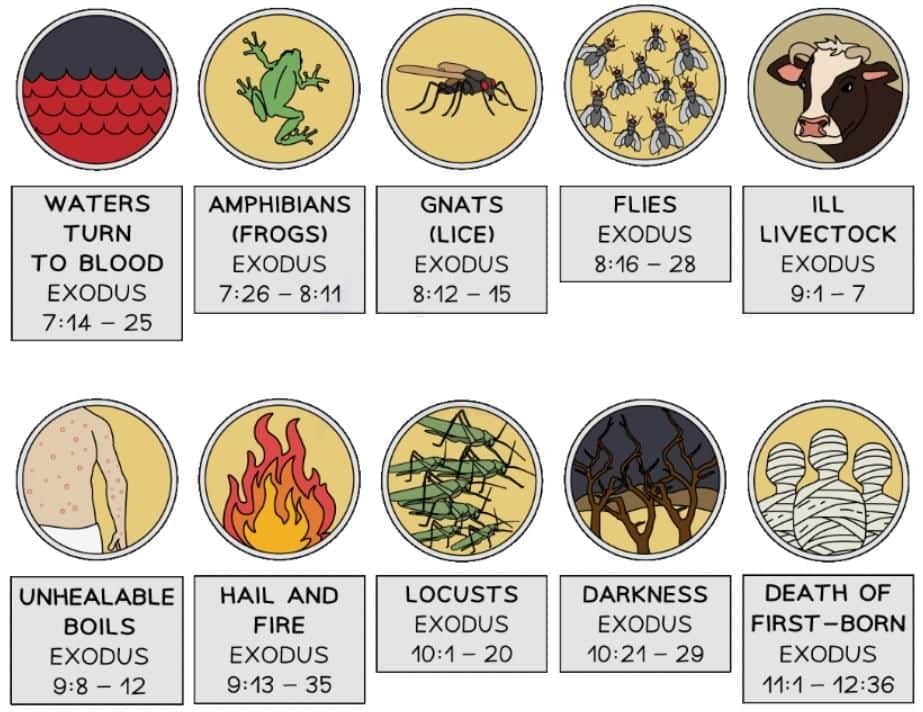Year 11 Exam > Year 11 Notes > Religion, Philosophy & Ethics for GCSE/IGCSE > Judaism: Pesach
Judaism: Pesach | Religion, Philosophy & Ethics for GCSE/IGCSE - Year 11 PDF Download
Pesach
Pesach, also known as Passover, commemorates the liberation of the Jewish people from slavery in Egypt.
- The narrative of Passover is found in the Book of Exodus, Chapter 12 of the Torah.
- God instructed the Jewish people to observe this festival annually as a symbol of freedom:
"This day must be one that you will remember. You must keep it as a festival to God for all generations. It is a law for all time that you must celebrate it" (Exodus 12:14).
- Often called the Festival of Freedom, prayers are offered each year for those who remain oppressed.
- The holiday recalls how, over 3,000 years ago, Moses led the Israelites out of Egypt, leaving slavery behind.
- Moses repeatedly approached the Pharaoh, who consistently refused to free the Israelites.
- Moses warned that God would send ten plagues upon Egypt if the Pharaoh did not comply.

- During the final plague, God instructed Moses to have the Israelites mark their doorposts with lamb’s blood.
- This signaled to the angel of death that Jewish families lived there, sparing their firstborn children.
- The term "Passover" originates from the angel passing over these marked homes.
- In the final plague, even the Pharaoh’s son perished, prompting him to summon Moses and order the immediate departure of the Israelites.
- After more than 200 years of enslavement, the Jewish people gained their freedom.
How is Pesach Celebrated?
Pesach involves specific preparations and rituals to honor the Exodus story.
- In preparation, Jews remove all grain products, known as chametz, from their homes.
- Grain is prohibited during the festival.
- Leavened foods (containing yeast), such as bread, beer, and oats, are removed, and homes are thoroughly cleaned to eliminate any traces.
- This practice reflects the haste of the Israelites’ departure, leaving no time for bread to rise.
- Candles are lit to usher in Pesach.
- Families attend synagogue services, where special prayers are recited and passages from the Torah are read.
- A significant ritual is the Seder Meal, which includes symbolic foods:
- A lamb bone, representing the sacrificial lamb.
- A boiled egg, symbolizing new life.
- A green vegetable dipped in salt water, signifying the tears of the enslaved Jews.
- Bitter herbs, reflecting the bitterness of slavery.
- Charoset, a paste of apples, walnuts, and wine, symbolizing the mortar used by slaves in construction.
- Unleavened bread (Matzah), recalling the haste of the exodus when bread could not rise.
- Four glasses of wine, symbolizing joy, are consumed.
- An additional glass of wine is set aside for the Prophet Elijah, who is believed to return to herald the Messiah.
- Wine also represents the lamb’s blood used to mark doorposts, protecting Jewish children during the final plague.
- The Seder plate’s foods each symbolize an aspect of the Exodus story, which is retold during the meal using the Haggadah, a book of rituals.
The document Judaism: Pesach | Religion, Philosophy & Ethics for GCSE/IGCSE - Year 11 is a part of the Year 11 Course Religion, Philosophy & Ethics for GCSE/IGCSE.
All you need of Year 11 at this link: Year 11
|
172 docs|3 tests
|
FAQs on Judaism: Pesach - Religion, Philosophy & Ethics for GCSE/IGCSE - Year 11
| 1. What is the significance of Pesach in Judaism? |  |
Ans. Pesach, also known as Passover, commemorates the Exodus of the Israelites from slavery in Egypt. It symbolizes freedom and redemption, marking a pivotal moment in Jewish history when God liberated the Jewish people from bondage. The festival emphasizes themes of liberation, faith, and the importance of remembering one's heritage.
| 2. How is the Seder meal conducted during Pesach? |  |
Ans. The Seder meal is a ritual feast that takes place on the first two nights of Pesach. It follows a specific order, including the reading of the Haggadah, which tells the story of the Exodus. Participants eat symbolic foods such as matzah (unleavened bread), maror (bitter herbs), and charoset (a sweet mixture) while engaging in discussions and rituals that reflect on their history and the themes of freedom and redemption.
| 3. Why is matzah eaten during Pesach? |  |
Ans. Matzah is eaten during Pesach as a reminder of the haste with which the Israelites left Egypt, not allowing their bread to rise. It represents humility and simplicity, serving as a symbol of the slavery endured by the Jewish people. The prohibition of leavened bread (chametz) during this time also signifies the removal of arrogance and pride.
| 4. What are the main customs and traditions associated with Pesach? |  |
Ans. Key customs of Pesach include the cleaning of homes to remove all chametz, the Seder meal with its rituals, and the reading of the Haggadah. Families often gather to celebrate together, and it is customary to ask questions about the meaning of the holiday, especially from children, to promote engagement with the history and values of Judaism.
| 5. How does Pesach relate to other Jewish holidays? |  |
Ans. Pesach is one of the major Jewish holidays and is linked to other significant festivals, such as Shavuot and Sukkot. It is seen as the beginning of the Jewish agricultural year and is closely connected to themes of liberation found in other holidays. Shavuot, which occurs seven weeks later, celebrates the giving of the Torah at Mount Sinai, furthering the narrative of Jewish identity and covenant with God established during Pesach.
Related Searches













